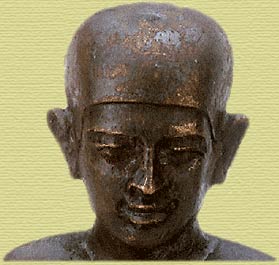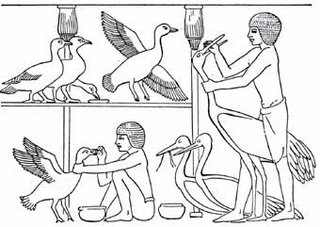Ramses II was King Solomon
This is another great article by Andis Kaulins at www.ancientegyptweblog.blogspot.com
Very few equivalences in ancient times are so certain as the equivalence of Ramses II with King Solomon. Indeed, no mainstream scholar has been able to present even the most minimal requisite evidence necessary to rebut my challenge to current chronology as posted at https://listhost.uchicago.edu/pipermail/ane/2003-July/009941.html
Egyptologists, Oriental and Biblical scholars do not like to be confronted with facts - rather, they continue to build their nice little houses of cards as if facts contrary to their ill-conceived theories and chronologies simply did not exist. The closed-minded majority of Egyptologists seem to have a limited capacity for critical thinking.
Just how long did Ramses reign? They assume it is 67 years of sole regency, but the evidence is against them.
It is quite clear that Ramses did not rule alone for 67 years but like Solomon only ruled 40 years as a sole regent.36 of these 40 years were peacefully ruled after his reaching the age 30 (when the 30-year ceremony was held). After the success of the battle (and peace) of Kadesh (which led to peace in the ancient Near East), Solomon could build the Temple in celebration, indeed 480 years after the Exodus from THEBES (= EGYPT, eTHEBETE) which in ancient times was "Egypt", whereas the Delta-region was "Judah" and so also was always marked on the ancient hieroglyphs, i.e. as SUTah (from Gardiner: su-plant phon: sw log: sut-rush (swt), king (nsw), see in this regard http://www.reshafim.org.il/ad/egypt/people/gardiner/m.htm ).
It is a hieroglyph which the helpless Egyptologists now write totally incorrectly with a preceding N, even though the hieroglyphs place the N at the end - how foolish on the part of the scholars. The original Indo-European-based Pharaonic term is similar to the Baltic term SUTENIS which means "hot humid area, marshy region" i.e. the Nile Delta, and which is a homophonic term also for SUTNIS "envoy, ambassador", which the king of the Delta was in ancient days to this region. The N which the Egyptologists now artificially set in front of these hieroglyphs - in the totally faulty reading "nesubait" - is sheer idiocy, misunderstanding the placement of the Indo-European prefix no- as identical to Baltic no- ("from, off, out of, with, of, out of, etc.") in front of Pharaonic viz. similar Baltic words sach as SUT- "to send", whence SUTNIS "envoy, ambassador" and NOSUTIT "to send off" but also SVET- "holy" and whence NOSVET- "holy of, to celebrate something holy" and ZIB "to shine" whence NOZIBET "to flash, twinkle", with the latter accounting for the NESUBAIT of "star names" of the Pharaohs. What the Egyptologists have made of this simple grammatical Indo-European construction is an Alice in Wonderland creation wondrous to be behold for its lack of relation to actual reality.
But to return to the matter at hand. There is in fact substantial evidence - acknowledged but ignored by the mainstreamers - that the early years of rule of Ramses II were a coregency with Sethos (King David), whose daughter he married (as Solomon also married the daughter of the pharaoh). Is it not remarkable that a Jewish king is marrying into the royal "Egyptian" Pharaonic family, which allegedly was not Jewish - come on, what nonsense is that? The scholars are clueless.
It was during the rule of Sethos (Seti, Setoy, i.e. King David) that the war and conquering took place. Ramses did not rule for 67 years ALONE but rather ruled 27 in coregency with King David and then ruled 40 years alone. Indeed, Clayton in Chronicle of the Pharaohs writes that Ramses took sole regency at age 25. These ca. 40 years of sole regency by Ramses II (i.e. King Solomon) were also peaceful (except for the battle of Kadesh) and marked the greatest period of building by any pharaoh since the days of the pyramids - this was the reign of Solomon (Ramses II, i.e RA-Messias "born of the Sun") and such an era of construction could only have occurred in a time of peace.
One should also point out in this connection that Ramses had already married two of his wives ten years before he became the sole Pharaoh, which, presuming that he became sole regent at the age of 27, would have meant that he was 17 at the time of first marriage, which makes sense, given the age at which it made biological sense for a man to take a woman for a wife.As written at http://www.touregypt.net/magazine/ancientegyptianpeople.htm:
"Ramesses II probably married the first two principal wives at least ten years prior to the death of his father, Seti I, before Ramesses II actually ascended the throne."
Ramses as Solomon thus ruled only 40 years ALONE (36 years of peace) plus 27 as coregent, during the war period.
More Evidence on the Age and Reign of Ramses II (who was King Solomon)
The Abydos Stela of Ramses IV refers to Ramses II as "living" 67 years. 'The Abydos stela of Ramses IV reads, according to this website as follows:"those things which King Ramses II, the Great God, did for thee in his sixty-seven years".
This is the main source for the idea that Ramses II reigned for 67 years, but it is quite clear from the context that these 67 years apply to the length of his life.
Anniversary Feasts celebrated by Ramses II point to a reign of 40 years. According to the table of important dates of Ramses' life in Clayton, Chronicle of the Pharaohs, the FIRST anniversary feast (for the celebration of Ramses II sole ascension to the throne) took place 25 years AFTER the oldest date given, which can only be his birth, and NOT, as Clayton writes, the begin of his sole reign. He celebrated 13 such anniversaries during his reign, each of which - not understood by the Egyptologists - took place every 3 years = 39 years, and there was no 14th anniversary celebrated, so that Ramses ruled ca. 40 years, as did Solomon.
The term Egypt in ancient sources referred to THEBES and not to the Nile Delta region. I repeat again for the naysayers that in the ancient texts EGYPT was THEBES but did not include the NILE DELTA which was GATH, JUDAH, SUT viz. GOSHEN, from which the GIZA plateau takes its name. That knowledge is necessary to mesh the hieroglyphic and Biblical accounts together as one.
As I have written here at the LexiLine website (with some new corrections to the text):
WHERE WAS JUDAH?
An analysis of the the ancient terms Shihor, Yamsuf (Jamsuf), Idj-Taui and Fayyum (Fay-yum) gives us a clear answer.
SHIHOR (Nile waters of the Nile Delta plus Fayyum)
SHIHOR or SCHIHOR in Joshua 13,3 defines a water "flowing before Egypt" and Isaiah 23,3 mentions Shihor in connection with the Nile.
I Chronicles 13,5 states that the Kingdom of David (!) extended from the Shihor of Egypt to the road to Hamat (the land of the Hittites).
Fayyum (Lake Fayyum, viz. Fayoum) and Bahr Yusuf (the correct Biblical Beersheba)
In Egyptian sources Shihor referred to the waters of the Nile Delta together with Lake Fajum (Fayyum) INTO WHICH the ancient channel of the Nile flowed (today this is the canal Bahr Yusuf = Biblical Beersheba, i.e. Bahr (yu)SUF. (Sivan in his work on North Semitic dialects says that the yu syllable was added in later Semitic and was not a part of the word originally). Hellenistic sources say it WAS an arm of the Nile.
Scholars think that the Kingdom of David, i.e. Judah, ended at what is modern (non-biblical) Beersheba in current Israel.That unproven assumption is the greatest historical geographic error ever committed and runs directly contrary to the actual written sources available. Judah included Fayyum.
Jam Suf (the Sea of Reeds)
In Biblical Exodus, Fayyum is Hebrew JAM SUF "the sea of reeds" which can ONLY be Fayyum (the only sea of reeds in Egypt) and SUF is the place where Moses repeated "the law" to the children of Israel.
THE SOUTHERN TRIBES
Judah and Benjamin (the southern tribes which united as Judah) were only 2 of the 12 tribes of the Hebrews and the other 10 tribes rebelled at the time of Rehoboam (Merentptah), Jerobeam (Priam, King of Lydia (Troy)) and Ramses III (Shishak). The invasion of the sea peoples during the reign of Ramses III was part of the Trojan War.
The name Israel derives from an Indo-European term similar e.g. to the example of Latvian Izrauji "rebels".
When we speak in modern times about Israel and the Jews, we have completely FORGOTTEN about Judah which in fact is the more important of the two historically because it existed prior to the name "Israel" ever appearing on any monument. The first appearance of the name "Israel" on any monument occurred on the Merenptah Stela of defeated enemies.
Idj-TauiJudah was Idj-taui (= Ju-dah)
IDJ-TAUI was the Nile Delta, including Per-Ramses (Pi-Ramesse), historically the home of the Hebrews in what we "today" call "Egypt", but which was actually the Nile Delta region called Judah (SUT viz. SHUT) in ancient days.
JUDAH in hieroglyphic writing is symbolized by the raised cobra hieroglyph, DJD.
Judah's geographical boundaries extended from Hebron (city of the unification of Judah and Israel)to the "Brook of Egypt", i.e. the Nile arm at Fayyumand to Beer Es Sebua = Bahr Yusuf - the ancient channel of the Nile into Fayyum.
It was at Fayyum that the last pyramids were built, two of them alone for Amenemhet III (one at Dashur and other at Hawara), with the end of this overdone pyramid-building period marked by the sudden abandonment of the worker-city Kahun. Our explanation is that the workers had had enough of Amenemhet III and that was the end of the pyramid-building age. No more pyramids were ever built. Amenemhet was thus the Pharaoh of Exodus.
The era of Moses (who is found in the hieroglyphs erroneously transcribed by the Egyptologists as Sobekhotep II) and his short-term allies, the Hyksos (Palestinians, Midians) had dawned.
 The Famous Egyptian Architect
The Famous Egyptian Architect 
. Although this book is relatively short at 120 pages it is well written and invigorating, which makes Imhotep: The Egyptian God of Medicine
an excellent read.










